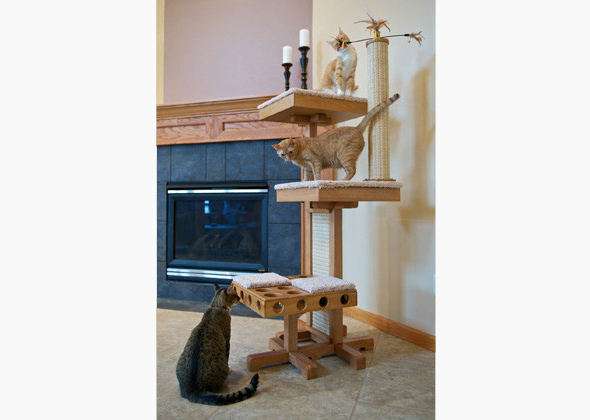What Should I Do If My Pet Vomits?
Published on November 03, 2015
Skip To

So how do you know when vomiting merits a trip to the vet? If you have any doubts or concerns, call your veterinarian for advice. But in general and if the vomiting is mild, you can monitor your pet at home if:
- The vomiting is associated with eating grass or another nontoxic plant, and your pet is eating, drinking and acting normally.
- The vomiting is preceded by retching or gagging and produces a hairball. After the hairball is produced, the vomiting should stop. However, some animals will vomit up a hairball incidentally during vomiting episodes, so vomiting that continues after a hairball is produced may not be normal.
- The vomiting associated with a known dietary issue — such as a sudden food change or eating food scraps — stops rapidly and your pet is acting normally.
- Your pet vomits regularly or the frequency of vomiting increases. It is not normal for a pet to vomit every day or nearly every day despite maintaining a normal appetite and activity level.
- The vomiting is associated with weight loss.
- The vomiting is associated with a lack of appetite, a lack of thirst, lethargy or other signs of illness.
- There is blood in the vomit. This can be a sign of stomach ulceration. Stomach ulcers can cause vomiting or be the result of chronic vomiting.
- The vomiting is associated with diarrhea, especially if your pet is not drinking or eating well. It is possible for pets with excessive fluid loss from vomiting and diarrhea to become dehydrated.
- The vomiting is associated with abdominal pain, difficulty lying down, pacing, excessive panting, difficulty breathing, or moaning or groaning.
- The vomiting is associated with abdominal distension, or if your pet continually tries to vomit but no vomit is produced — for instance, your pet is retching or dry heaving.
- The vomiting produces a
foreign object or starts after your pet consumes something indigestible.
- There is a possibility that your pet may have ingested a toxin in the house or yard.
More on Vetstreet:





